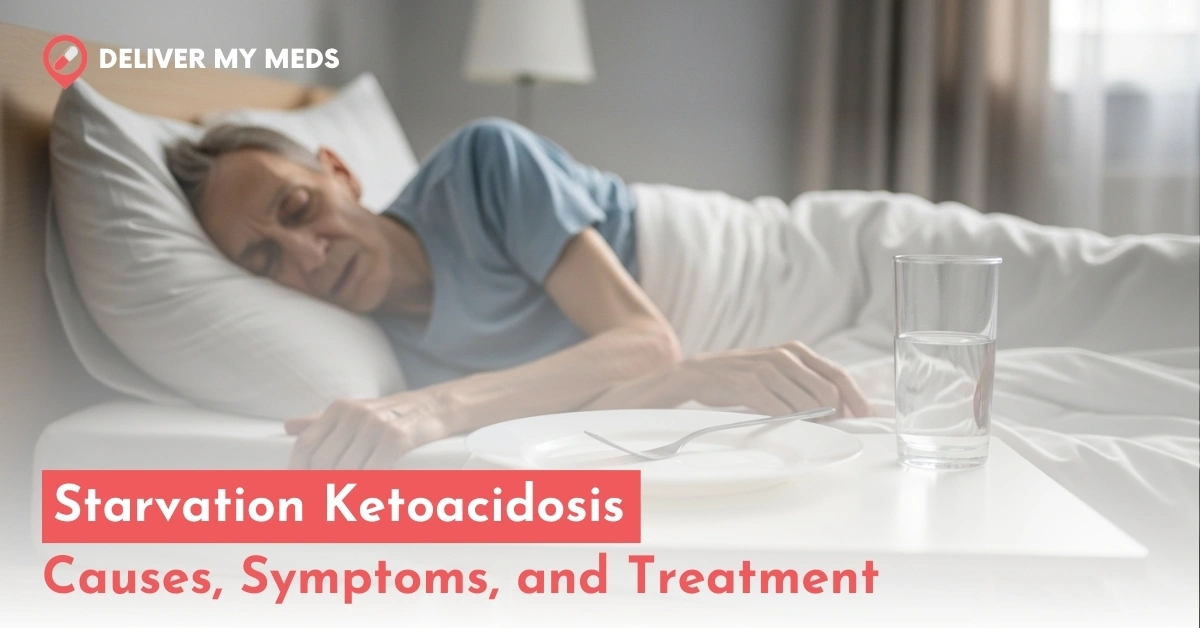
Many people with diabetes experience type 1 diabetes stomach aches. It is a common problem in many type 1 patients. If you’re a type 1 diabetic patient, you also feel that stomachache before. You’re not alone in this; a lot of people deal with the same situation. A stomach ache can happen for a lot of reasons, such as diabetic gastroparesis, blood sugar swings, or even nerve damage that affects how your stomach works. This can lead to bloating, nausea, and cramps. And a bunch of other issues that make daily life harder.
In this guide, we’ll talk about what’s causing that stomach pain, how it affects your body, and what you can do to start feeling better. We’ll also cover diabetic gastroparesis with symptoms and effects, plus how DMM products, like continuous glucose monitors (CGMs) and insulin pumps, can help you keep both blood sugar and stomach symptoms in check.
Overview of Diabetic Gastroparesis
Diabetic gastroparesis is a stomach problem that can happen in patients who are suffering from type 1 diabetes. The second condition is that it may also occur when your stomach muscles become weak and slow, and don’t work properly. In a healthy stomach, muscles squeeze food into the small intestine for digestion. With diabetic gastroparesis, this process slows down because the muscles and nerves, especially the vagus nerve, aren’t working properly. Food stays in your stomach longer, which can cause bloating, nausea, stomach pain, and swings in blood sugar. This can also make it tricky to time insulin doses correctly.
Common Symptoms of Diabetic Gastroparesis
If you have diabetes and gastrointestinal problems, you might notice:
- Ongoing stomach or abdominal pain in diabetic patients
- Feeling overly full after small meals
- Diabetes bloating and nausea
- Heartburn or acid reflux
- Loss of appetite and weight changes
- Blood sugar spikes or drops without a clear reason
If you see these symptoms often, it’s worth getting checked. Catching type 1 diabetes digestive complications early can make them easier to manage.
How Type 1 Diabetes Stomach Ache Can Affect You
You already know how important it is to manage blood sugar in daily tasks if you have type 1 diabetes. When you feel stomach pain, bloating, and nausea due to a stomachache, it can make your day difficult. These issues aren’t just uncomfortable; they can affect how you eat, how well your insulin works, and even your energy levels due to diabetes-related stomach issues.
- If your blood sugar goes up and down a lot (Hyperglycemia and Hypoglycemia), your stomach feels it too.
- High blood sugar can slow down your stomach and damage the nerves that help it work; this often leads to diabetic gastroparesis.
- You might feel bloated, nauseous, or crampy when your sugar is high and low.
- On the other hand, low blood sugar or hypoglycemia can make you feel nauseous, which can cause sudden stomach cramps and discomfort.
The good news? Once you understand what’s happening inside your body, you can take steps to feel better.
Other Digestive Problems in Type 1 Diabetes
Alongside diabetic stomach bloating or diabetes-related constipation, you might also have:
- Ketoacidosis stomach symptoms (if blood sugar is very high and insulin is too low, a medical emergency)
- Diabetic diarrhea and stomach pain from nerve or bacterial changes in the gut
- Low blood sugar, nausea or hypoglycemia, stomach discomfort during insulin lows
- Acid reflux (GERD) and celiac disease
Diagnosing the Cause of Your Stomach Pain
Doctors might use:
- A gastric emptying scan to see how fast food leaves your stomach
- Endoscopy to check for ulcers or inflammation
- Blood tests for nutrient levels and celiac screening
At DMM, we’ve seen how accurate glucose data from a Dexcom G7 or FreeStyle Libre 3 plus can help your doctor connect stomach symptoms with blood sugar patterns, making diagnosis and treatment faster.
Managing Stomach Pain and Gastroparesis
Blood sugar control is key. Using devices that can help you to smooth out sugar swings, which often reduces digestive symptoms.
Diet tips:
- Eat smaller meals more often
- Avoid high-fat and high-fiber meals that slow digestion
- Pick soft, easy-to-digest foods
- Drink water throughout the day
Recommendations to Support Digestive Health
If you follow these habits, you may notice improvement in digestion and overall comfort:
- Quit smoking: It will help you reduce irritation of the stomach lining and improve nutrient absorption.
- Limit alcohol: It prevents inflammation and protects your digestive tract.
- Exercise regularly: It will enhance your gut motility and help prevent constipation.
- Manage stress: If you manage this, you can lower the chance of digestive symptom flare-ups.
- Stay hydrated: It will aid smooth digestion and support bowel regularity.
Insulin Therapy and Digestive Symptoms
- Insulin is the backbone of life with type 1 diabetes, but when you have diabetic gastroparesis, timing your doses can get tricky.
- Basal insulin keeps you covered between meals; bolus insulin tackles the rise after eating.
- The problem? Delayed stomach emptying means food and insulin don’t always line up.
That’s where Omnipod insulin pumps or CGM monitors from DMM come in, giving you more control and helping cut down on stomach cramps in diabetics.
Constipation and Diarrhoea with Diabetes
Nerve damage from diabetes doesn’t only affect the stomach; it can also impact the intestines, causing them to slow down or speed up. This can lead to diabetes-related constipation, leaving you feeling heavy and uncomfortable. On the other hand, diabetic diarrhea and stomach pain may occur if there is bacterial overgrowth in the gut or if your body is not properly absorbing nutrients.
Things that often help:
- Drink water throughout the day
- Add fiber slowly (to avoid diabetic stomach bloating)
- Keep moving, light walks help your gut work better
- Try probiotics or medicines if your doctor suggests them
Role of Stress in the Digestive System
- Stress, anxiety, and low mood can make diabetes and digestive issues worse.
- Stress changes how your gut moves, makes pain feel stronger, and can even spike or drop your sugar.
Simple fixes you can try:
- Gentle stretching or yoga
- Breathing exercises when you feel tense
- A short daily walk to clear your head
If stress keeps adding to your type 1 diabetes abdominal pain, talking to a mental health professional can help break the cycle.
Supplements for Digestive Health
If you are experiencing type 1 diabetes with indigestion or gastrointestinal issues, you need to look for any deficiency of minerals or vitamins.
- Deficiency of Vitamin B12 can make nerve damage worse.
- Magnesium helps your gut muscles work better.
- Vitamin D can assist in reducing inflammation and supporting your digestive health
Your doctor will be able to tell you what to take, and using the right supplements along with devices like DMM’s CGMs and insulin pumps can help you feel better faster.
Conclusion
Type 1 diabetics are confronted with stomachaches as another obstacle to be overcome. Bloating, nausea, or delayed gastric emptying may be felt, which are normally related to changes in nerve function or changes in blood sugar levels. Happily, there are numerous steps that can be taken to eliminate these discomforts. With the help of maintaining blood glucose at the prescribed level, consuming easily absorbed foods, and regular visits with one’s healthcare professionals, one will probably notice improvement in one’s condition. In the end, diabetes and digestion management effectively lead to increased comfort, increased energy, and fewer difficult days.
Frequently Asked Questions


